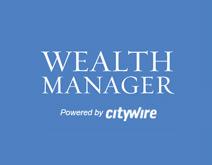
Four steps to finding the right ETF
Increasingly investors are asking how to select an ETF, given the breadth and depth of products available in the market. The European exchange traded funds (ETF) industry had 1,295 ETFs, with 4,579 listings, assets of $291 billion, from 37 providers on 21 exchanges, based on the recent ETFGI monthly industry report.
The criteria investors use to select ETFs was analysed in the recent EDHEC-Risk Institute study, covering 174 institutional investment managers and private wealth managers based in Europe who already use ETFs.
It is important to remember that the majority of respondents said they primarily use ETFs to gain broad market exposures, while over half use ETFs for buy-and-hold investments and to implement dynamic asset allocation.
The findings indicate that users of ETFs go through a four-step decision-making process when selecting an ETF.
Step one: Identify the type of exposure you want to implement.
Step two: Selecting a benchmark or index that best represents the desired exposure was cited by 67% of the respondents as being a critical factor in their decision-making process.
Factors to consider when selecting a benchmark should include the methodology, in terms of how the securities and their weights in the benchmark are determined, and whether it expresses your desired exposure.
How the index measures performance is also important, along with levels of withholding tax and exchange rates, among other considerations.
Step three: Analyse the costs associated with using various ETFs.
The total expense ratio (TER) is the figure most commonly used to measure the annual cost of owning a fund or ETF, and it is mentioned as a critical factor in the ETF selection process by 61% of the respondents. Nonetheless, it is important to remember that it does not actually represent the complete cost of owning a fund or ETF.
Costs will also include a number of additional factors such as the bid/ask spreads, commission to buy and sell the ETF, transaction costs inside the ETF. This includes the cost of using swaps in the fund, minus any securities lending revenue paid to the ETF.
Tracking error (TE) was cited by 60% of the respondents as being a critical factor in their decision-making process. TE is the standard deviation of the difference in returns between a fund and the relevant benchmark measured over a period of time. It is a statistical measure which carries probabilistic characteristics.
TE describes the distribution of the differences in returns, as opposed to an absolute measurement of return differences.
Step four: This is where you narrow down the list of products that can be used by reviewing factors such as the level and type of counterparty exposure. This was cited by 58% of respondents as being a critical factor in their decision-making process, if the ETF is Ucits-compliant, the domicile/regulatory regime, the assets under management and tax regime.
The reputation of the ETF provider and the depth of their range of ETFs are less important factors and are cited as critical by only 38% and 16% respectively among these users of ETFs.
